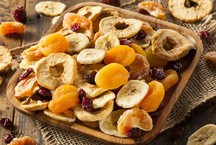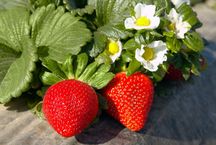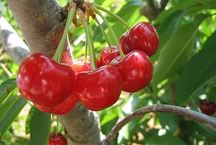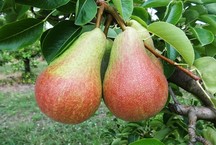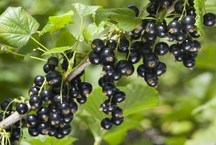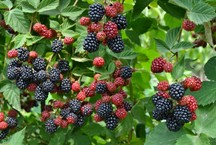Top 10 raspberry varieties

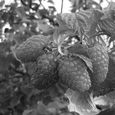

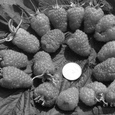

Raspberries are a popular and useful summer berry. Old adapted varieties in Central Russia are characterized by unpretentiousness and vitality. At the site raspberries can even behave aggressively, capturing new territories and expanding the borders of raspberry trees. This behavior is associated with the characteristics of varieties and lack of care. The best raspberry varieties according to gardeners from different regions are represented in our rating.
Raspberry varieties are conventionally divided into 4 groups: large-fruited, classic, remontant and standard (tree).
Large raspberry inherited from parental forms a high mass of berries and low winter hardiness. When growing large-fruited raspberry varieties in the Middle zone, shoots bend down and cover for the winter. To obtain large berries will need to create appropriate conditions: the introduction of organic matter, fertilizing, prevention of diseases and pests, regular watering. On poor soils do not get a good harvest, and in drought berries just dry on the branches. The brightest representative of the group, which has many fans and is grown even in the Urals, is the Beauty of Russia.
Standard raspberry, despite the growing interest in the group, it remains exotic in Russian gardens. These raspberry varieties are distinguished by their decorative effect, ease of picking berries, resistance to diseases and high yields (due to active lateral branching). "Raspberry tree" does not need support, the crown keeps its shape under the weight of the berries. In this case, varieties show good frost resistance and unpretentiousness in care. Formation consists in pinching the tops of the shoots by 10 - 15 cm. In this group, the Tarusa variety is distinguished.
Classic raspberry varieties fruits on the shoots of last year, so the ripening of berries begins early: from the end of June to July. Bushes overwinter with long shoots, which in the Moscow region is recommended to cover.
Repair raspberry bears fruit both on last year’s and on young shoots. But experienced gardeners recommend cutting out all the shoots in winter and getting one late harvest per young growth. In this case, the yield will be higher, and the size of the berries - more. Fruiting period for remontant varieties: from the end of July to September-October. Many varieties of remontant raspberries are well suited for the Moscow region. Their advantages: overwinter without problems, do not suffer from pests, exceed yield.
The choice of the best raspberry variety also depends on the purpose of laying a raspberry leaf: for home use of dessert berries or the sale of commercial crops. Commercial varieties are distinguished by high yield, transportability and attractiveness of berries, but they are inferior in taste.
The best varieties of raspberry reviews gardeners
| Category | A place | Name | Rating | Price |
|---|---|---|---|---|
| The best repair raspberry varieties | 1 | Polka | 9.8 / 10 | 250 |
| 2 | Bryansk marvel | 9.7 / 10 | 270 | |
| 3 | Orange Miracle | 9.7 / 10 | 250 | |
| 4 | Hercules | 9.5 / 10 | 450 | |
| 5 | Firebird | 9.5 / 10 | 220 | |
| The best classic raspberry varieties | 1 | News Kuzmina | 9.5 / 10 | 250 |
| 2 | Yellow giant | 9.5 / 10 | 300 | |
| 3 | Patricia | 9.4 / 10 | 200 | |
| The best standard raspberry varieties | 1 | Tarusa | 9.7 / 10 | 300 |
| 2 | Monomakh's hat | 9.3 / 10 | 270 |
The best repair raspberry varieties
|
Polka
250 (for one-year sapling in a package with wet moss)
Remontant dessert variety of Polish selection. Sprawling bush, height 1.6 - 1.8 m, forms a few root shoots, gives up to 10 replacement shoots. The shoots are sturdy, do not bend during fruiting, covered with small, thornless thorns. The berries are dark red, rounded oblong, with an average weight of 5 - 6 g, sweet taste, with a pronounced bright aroma, are well stored and transported. The yield of one bush with proper care exceeds 4 kg.The berries are not showered, are transported, due to the dry break, they are ideal in freezing. It shows high resistance to gray rot and spider mite, but is susceptible to measles system cancer. It has a low winter hardiness, but with the full cutting of the shoots, this drawback is not of primary importance. In arid climate, it manifests itself badly. This remontant raspberry variety received good reviews from gardeners in the Rostov Region and the Moscow Region. Main advantages:
Minuses:
|
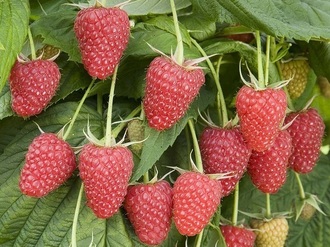 9.8 / 10
Rating
Reviews
The most delicious berry from remontantny. In regions with severe winters, it is better to cut flush with the ground and mulch well. |
|
Bryansk marvel
270 (for one-year sapling in a package with wet moss)
Repairman raspberry variety for commercial and personal use. By maturity refers to the late. Bush height 1.5 - 1.9 m, slightly sprawling, the formation of overgrown medium. The main shoots are thick with sparse soft thorns; there are no thorns on the fruit sprigs. The garter is made only on windy areas. Also, because of the long side shoots, the garter contributes to better ventilation and illumination of the lower tier. The berries are of classic red color, cylindrical, elongated, up to 3 - 4 cm long, weighing from 5 - 7 to 11 - 20 g. Average yield - 3 kg per bush. The taste is sweet and sour. Evaluation of taste is good and excellent. The berries are dense, well stored and carry transport. In order for the bush to realize its potential yield, the lower buds are removed, accelerating the ripening of the upper ones and contributing to the formation of larger berries. It prefers light fertile soils, on heavy loams the yield is sharply reduced. Winter hardiness is average. In the winter, it is recommended to mow shoots to the ground, since the left stump takes power from the rhizome and reduces winter hardiness. The variety does not perform well in arid regions. Recommended for the Moscow region and Central strip. Main advantages:
Minuses:
|
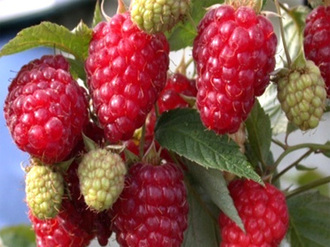 9.7 / 10
Rating
Reviews
This raspberry variety fell in love with late ripening, when there were only apples left in the garden. With good care and proper planting, there are no problems with it. |
|
Orange Miracle
250 (for one-year sapling in a package with wet moss)
Remontant variety with orange berries. Bush srednerosly, up to 1,7 m high, compact. The shoots are upright, heavily spiked, fragile and can break off under the weight of the berries. The formation of fruit twigs is active and covers 2/3 of the shoot length. The bush forms up to 7 shoots of substitution and gives a lot of shoots. The berries are cone-shaped, with a slightly pointed top, dense, aligned, up to 4 cm long and weighing 6 - 12 g. They have a delicate aroma and sweet taste with a slight sourness. The sugar content depends on the soil and climatic conditions of cultivation and the level of agricultural technology. Berries are well transported, when overriding remain on the branches. The yield from one bush reaches 3 kg, while before frost the variety has time to give 70 - 100% of the potential yield. There is a high resistance to pests and medium - to disease. The dessert taste of berries and good transportability make the variety universal. The variety showed itself well in the Moscow and Rostov regions, recommended for the Central Belt, the Urals and Western Siberia. When grown in an annual crop (cut into winter for a stump) there is no risk of freezing of shoots. Main advantages:
Minuses:
|
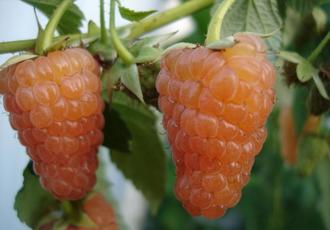 9.7 / 10
Rating
Reviews
The best sort of repair raspberry for the Moscow region, in my opinion. The berry is tasty and very beautiful, it ripens quickly.If you cut off the immature berries together with the stalk, they ripen perfectly. |
|
Hercules
450 (for 2-year-old sapling in a container)
Remontny grade of commercial purpose. Bush height 1.6 - 1.8 m. The shoots are erect, with stiff spines along the entire length, durable and do not require support. Lateral branching is abundant, shoot formation is weak (up to 3–4 substitution shoots). Variety tolerates thickened planting, does not require frequent thinning. Ruby berries, in the shape of a truncated cone, dense, weighing from 6 to 10 to 15 g, with a pronounced aroma. The taste is sweet and sour, refreshing, but in cold weather, the acidity is more pronounced. The yield from one bush reaches 4 kg. It is highly resistant to diseases (including viral) and pests, drought-resistant and winter-resistant. Waterlogging spoils the taste of the berries, makes it watery. With a lack of heat and light during the ripening period, the berries turn out to be sour, they are good in compotes and preserves. This raspberry variety is well adapted in the Moscow region, the Central belt and the Urals, showing stability and unpretentiousness. In regions with cold rains in the second half of summer, it is impossible to obtain high-quality berry without additional measures. Main advantages:
Minuses:
|
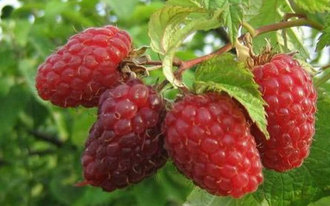 9.5 / 10
Rating
Reviews
For beginners, this raspberry is the easiest to clean compared to other remontant varieties, top dressing and a well-chosen site that manages to get tasty berries. |
|
Firebird
220 (for one-year sapling in a package with wet moss)
Remontant grade for small areas. Gardeners appreciate it for great taste. In terms of yield, transportability and size, it loses to other commercial varieties. Most often grown for personal use. Shrubs are compact, up to 2 m in height, form 5–8 replacement shoots. The shoots are covered with soft and thin spines, on the upper part to a lesser extent. Requires a garter to the trellis. Bright red cone-shaped berries with a blunt top, glossy, drupes are large, dense, weighing 4 - 6 g. The yield per bush is 2 - 2.5 kg. Ripe berries are not showered. If berries are harvested regularly, without overriding, the crop is well transported. This raspberry shows good results in the southern regions, but due to the lack of heat resistance, it needs mulching and shading. In the northern regions, manages to realize only 70% of the potential yield. Main advantages:
Minuses:
|
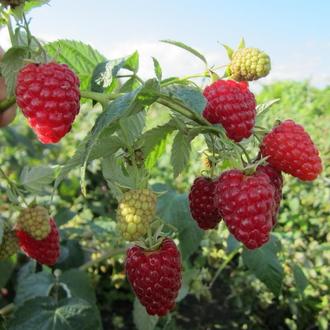 9.5 / 10
Rating
Reviews
Excellent dessert berry, not much prickly, so picking berries without a negative. Care is the same as for other remontant raspberries. |
The best classic raspberry varieties
|
News Kuzmina
250 (for one-year sapling in a package with wet moss)
Old classic mid-season raspberry variety, not losing its popularity. Grown for fresh consumption and processing, not suitable for commercial purposes. Shrubs tall, from 2 to 2.5 m, erect, slightly sprawling, form a few root suckers. Gives few shoots replacement. Shoots arc-shaped, drooping. Thorns are long and thin (shorter and thicker towards the apex), they cover all shoots, but their number is average. The berries are oblong, painted in a red matte color, the average weight of 2 - 5 g, with a faint aroma. Tastes are excellent, but the berries are not suitable for transportation and storage. When disrupted, they are easily separated from the stem, but do not fall off when overripe. On average, from one bush can collect 1.5 - 2 kg. In favorable years on young shoots re-fruiting is possible. The variety is not demanding on soil types and care, but has low drought resistance.In the absence of irrigation, the onset of fruiting is delayed by 2 to 3 weeks. Poor drafts and susceptible to viral diseases. In general, the variety is characterized as the most enduring and is recommended to “lazy” and inexperienced gardeners. It is grown in all regions of Russia, but it is of particular value for the Central Belt, the Urals and Western Siberia. Main advantages:
Minuses:
|
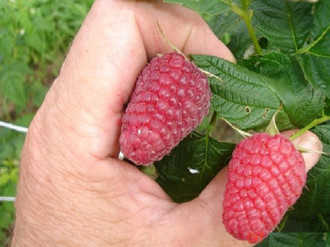 9.5 / 10
Rating
Reviews
The best raspberry variety for Siberia, for fresh consumption. I have 2 bushes planted specifically for children. The growth does not torment, with shelter, too, I do not mess around. |
|
Yellow giant
300 (for one-year sapling in a package with wet moss)
Classic yellow raspberry variety of early ripening. The bush is powerful, 2 - 2.3 m high. It forms 8 - 10 substitution shoots, but the bush remains compact and does not fall apart. Young shoots without thorns, on old - in small quantities. Prone to strong branching fruit branches: up to 4 - 5 order. Intensive development of root growth. The main fruiting is on last year's shoots, but in favorable conditions a second fruiting wave is possible at the tops of young growth. Amber-yellow shirokokonicheskie years with a dull apex, up to 4 cm long and weighing 8 - 10 g. The yield from one bush exceeds 4 kg. Due to poor transportability, they are used only for personal use. In the middle zone shows insufficient winter hardiness and requires additional protection. The shoots are flexible and easily bend down for winter shelter. Main advantages:
Minuses:
|
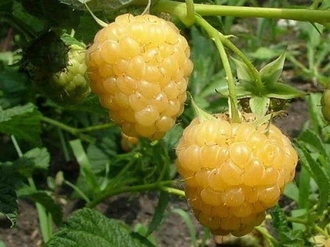 9.5 / 10
Rating
Reviews
I keep a few bushes of this raspberry, as a delicacy. The grade is appreciated by excellent taste and beautiful berry. Not suitable for sale, processing and freezing. |
|
Patricia
200 (for one-year sapling in a package with wet moss)
Classic variety of large-fruited raspberries. Sprawling bush, 1.5 - 1.8 m high, annually gives 6 - 10 replacement shoots. Forms a lot of root shoots, which should be promptly removed. Requires a garter to the trellis. Shoots of the first year without thorns. At the end of the season formative pruning shoots required. Fruiting begins in mid-June and lasts until mid-August. The berries are bright red, cylindrical or irregular in shape, with a velvety patina, with an average weight of 5 - 6 g (up to 10 - 12 g). Drugs are large, fit tightly. Aroma pronounced. The average yield is 4 - 5 kg per bush, but it can reach 8 kg. Berries do not tolerate transportation and are not intended for long-term storage. The variety does not tolerate overmoistening. Recommended for the Central region of Russia, but successfully grown in the Urals. Main advantages:
Minuses:
|
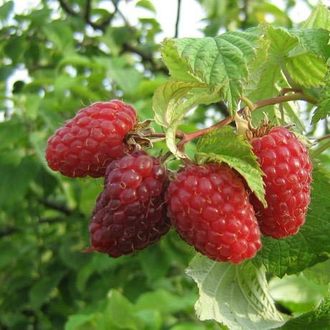 9.4 / 10
Rating
Reviews
Berries with very tender flesh, ideally: pick and immediately eat. With the harvest of raspberries can not be postponed - overripe berries mold and crumble. |
The best standard raspberry varieties
|
Tarusa
300 (for one-year sapling in a package with wet moss)
Standard raspberry late ripening. In one season, a branchy tree grows to a height of 1.8 m, with thick shoots on a trunk. The shoots are elastic and do not need a garter, thorns are absent. The variety perfectly branches and does not need special labor-intensive pruning. Gives annually 3 - 4 escape replacement. In the bush leave no more than 10 shoots. Maroon-red berries, sweet and sour, conical or irregular in shape, up to 10 - 15 g, dense and transportable, have a pronounced flavor and are good in processing.Small seeds are almost not felt. Productivity is high: up to 4 kg from one bush. Despite the high declared winter hardiness, freezing is observed on a windy area in snowless winters. Grown from the suburbs to the Urals. In rainy summer, the berries are watery and sour. The taste is strongly influenced by the care and feeding. Main advantages:
Minuses:
|
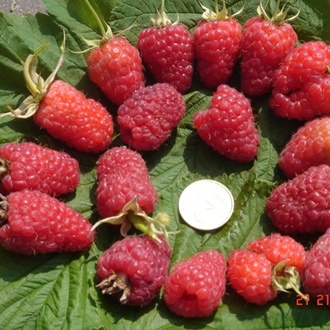 9.7 / 10
Rating
Reviews
The shoots of Tarusa are powerful, but under the weight of the harvest, they still bend and can break, so I use a trellis. Good yield yield, use for harvesting jam and jam - are very fragrant. |
|
Monomakh's hat
270 (for one-year sapling with wet moss bag)
Standard raspberry variety with remontant fruiting. Shrub up to 1.5 m, forms up to 5 powerful branched shoots with drooping tops. The lower part of the shoots has hard spikes. Due to the weak formation of shoots for breeding, grafting is more often used. The berries are juicy red, weighing from 7 to 20 g, pyramidal with a blunt top, sweet with a slight sourness and a bright aroma, evened and appetizing. When collecting do not fall apart, suitable for storage and transportation. From one bush they collect an average of 4-5 kg. Painfully reacts to interruptions in irrigation, tying small berries. The variety has average winter hardiness. In the northern regions under the conditions of early frosts due to the late ripening period and extended fruiting, only 50% of the potential yield is realized. This raspberry variety is good for southern regions. In the middle zone, it is grown in an annual crop, when in the fall the shoots are cut to ground level. Main advantages:
Minuses:
|
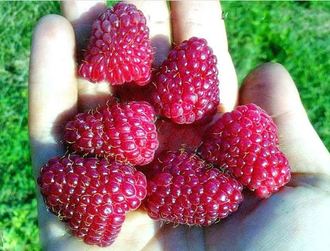 9.3 / 10
Rating
Reviews
Berries of dessert taste, bushes neat, fruitful. Raspberries require attention, but this is in all large-fruited varieties. |
Studying varietal diversity in the catalogs of online stores or nurseries, we must not forget about acclimatization and varietal testing in new climatic conditions for the variety. If the raspberry variety seems attractive to you and has positive reviews in other regions, then first you should buy 1 - 2 bushes, provide them with the best conditions and conduct their assessment. Taste, strength of growth, ripening period are largely determined by the conditions of cultivation: the climate zone and agricultural technology.
Have a good harvest!
